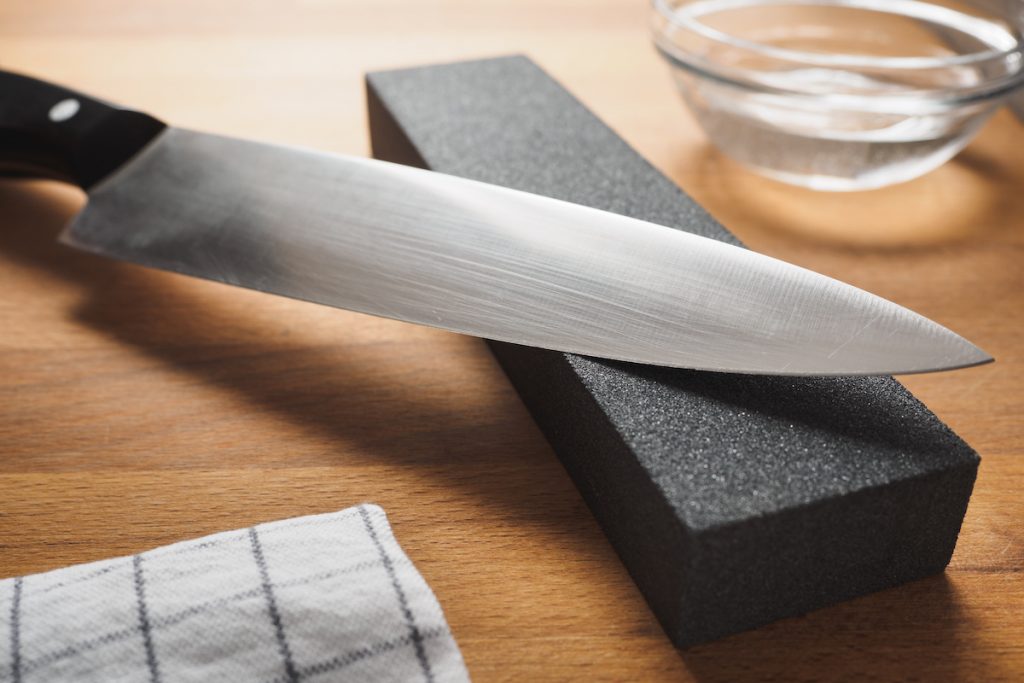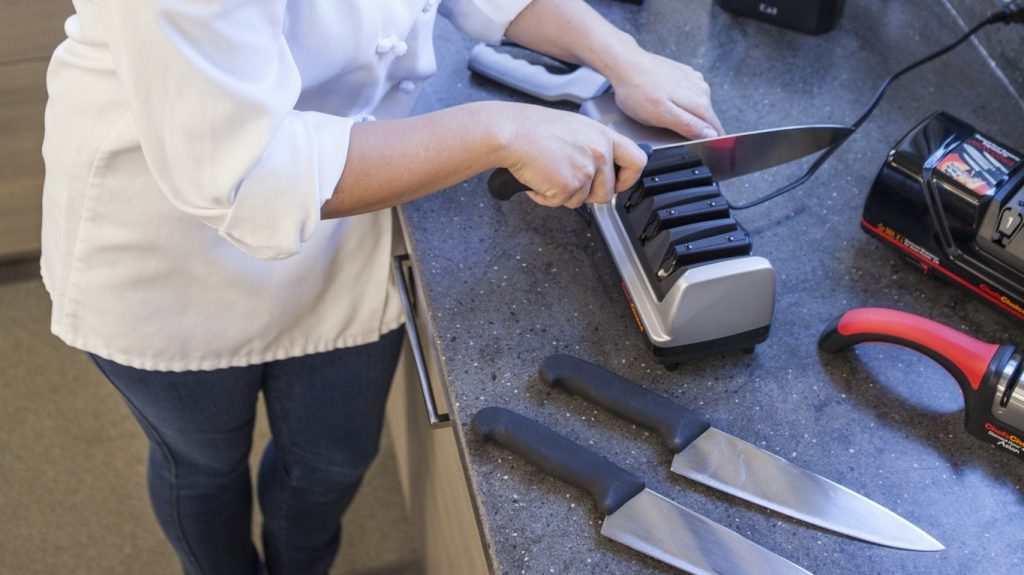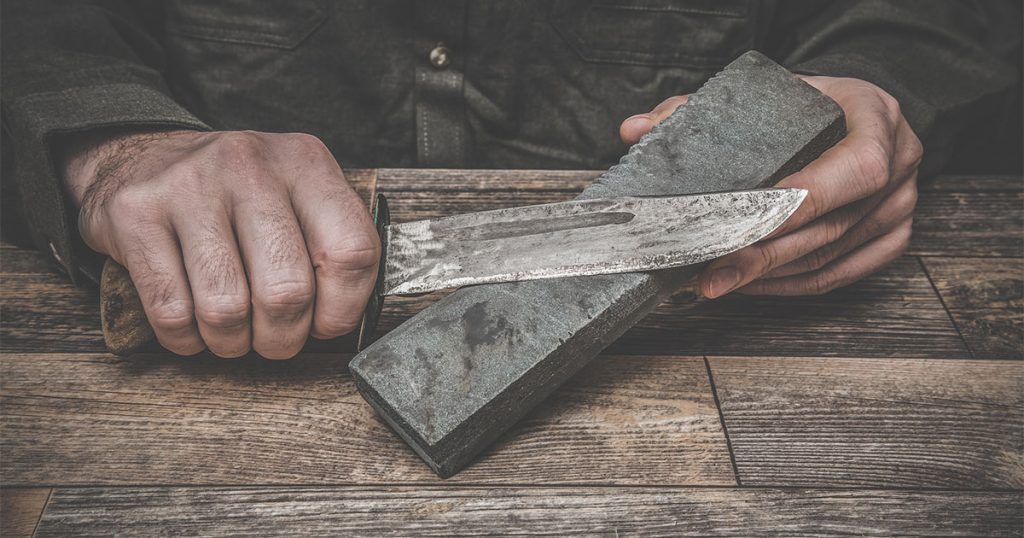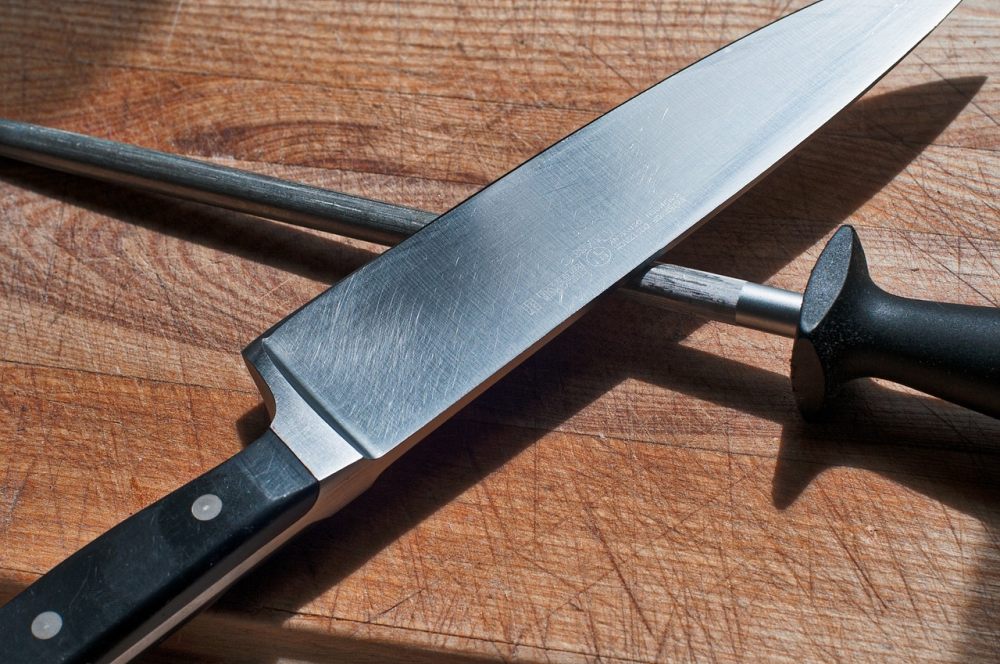Knowing how to choose a knife sharpener and use it is an essential skill any professional chef or home cook should possess. Besides, having your knife sharpened regularly will allow you to do your kitchen work more precisely and with less effort. Although it may seem contradictory, a sharp knife is much safer to use than a dull blade that is mashing your food and veggies instead of slicing them precisely with easier and more fluid movements required from your part.
Features to Consider When Shopping for Knife Sharpener

Types
There are different types of knife sharpeners to choose from, including electric, manual, whetstones, etc. Manual sharpeners provide the easiest and cheapest way to get your knives sharpened. The great thing about these types of sharpeners is that they have two sides – a fine side, and a coarse side. Plus, they’re very simple to use. You just take a cook’s knife that you stabilize on the counter while you pull it through one of the abrasive slots, sharpening both sides of the blade at once. These knives are great for busy kitchens and caterers as they offer a quick and easy way to sharpen your blade to be as good as new. They are great for travelling chefs as they don’t take up much space which makes them easy to pack and carry.
Compared to these, electric knife sharpeners have similar features, but they make use of motorized abrasive disks, wheels, or flexible belts that spin against the blade to sharpen the knife as you gently move it through the machine. Therefore, they are considered to be much more powerful and precise than manual knife sharpeners and more expensive as well. Many models feature two or three levels of abrasion.

Sharpening stones, also referred to as whetstones are also a great alternative for sharpening very dull knives. These are rectangular or oval blocks featuring a coarse grit side and a fine side. These stones are considered a traditional sharpening method and they come in many styles featuring more degrees of coarseness. To use them is very straightforward. You just need to hold the knife horizontally at the correct angle as you run it down the stone. It may require making several passes back and forth over the stone surface before your knife gets completely sharp. Moreover, using mineral oils to lubricate the whetstone surface is also recommended as this would make it easier for the blade of the knife to pass over the stone, as well as keep the steel shavings from clogging the stone’s pores.
Functionality and Durability

Having mentioned all of these aspects by now you should have formed a picture in your mind of what kind of sharpener you need. The most important aspect to consider is its functionality and durability features. The best kinds of sharpeners usually feature multiple sharpening edges so you can bring to life dull or damaged knives. Also, you need to choose those that come with safety features, that should protect your fingers from being cut while sharpening the blade of the knife. As there are tons of sharpeners on the market that don’t feature any safety features included, you should pay attention to not end up buying some of them.
Size
Although the size of the sharpener doesn’t affect its ability to sharpen, it plays an important role in how you store it. Most types of stones and manual sharpeners are lightweight, have a small size, that can be stored inside a drawer or taken with you. Compared to them, the electric ones take up much more space as they have larger dimensions. Therefore you need to consider your needs, and portability aspect before deciding to make a purchase.
Grit

Regardless of the type of sharpener, they all feature different levels of grit. This refers to how much metal is taken off the knife during the course of sharpening. For instance, whetstones come in a different range of grits. A coarse grit (featuring less than 1000 grit ) is typically used when repairing knives with chipped edges. Medium grit (1000 to 3000 grit ) is used to sharpen dull knives that aren’t damaged and finally, fine-grit (4000 to 8000 grit ) refers to finishing stones that are used to refine the knife edge.
Price
When it comes to the price point, you need to pay attention to your budget and choose a knife blade sharpener in that price range. The price is usually affected by the inclusion of features. If you plan to use it often you may consider investing in a higher-end design that will serve you many years down the road. However, if you are planning on using it rarely, or just before some holidays, you may not need to spend a lot, as a good manual sharpener will work just fine.
You can find knife sharpeners in the price range of $10 to $150, depending on the design. If you decide to have your knives sharpened by a professional knife sharpening service, you should expect to pay about $75 to $100 two to three times a year, depending on the type and the number of knives that need sharpening.


























